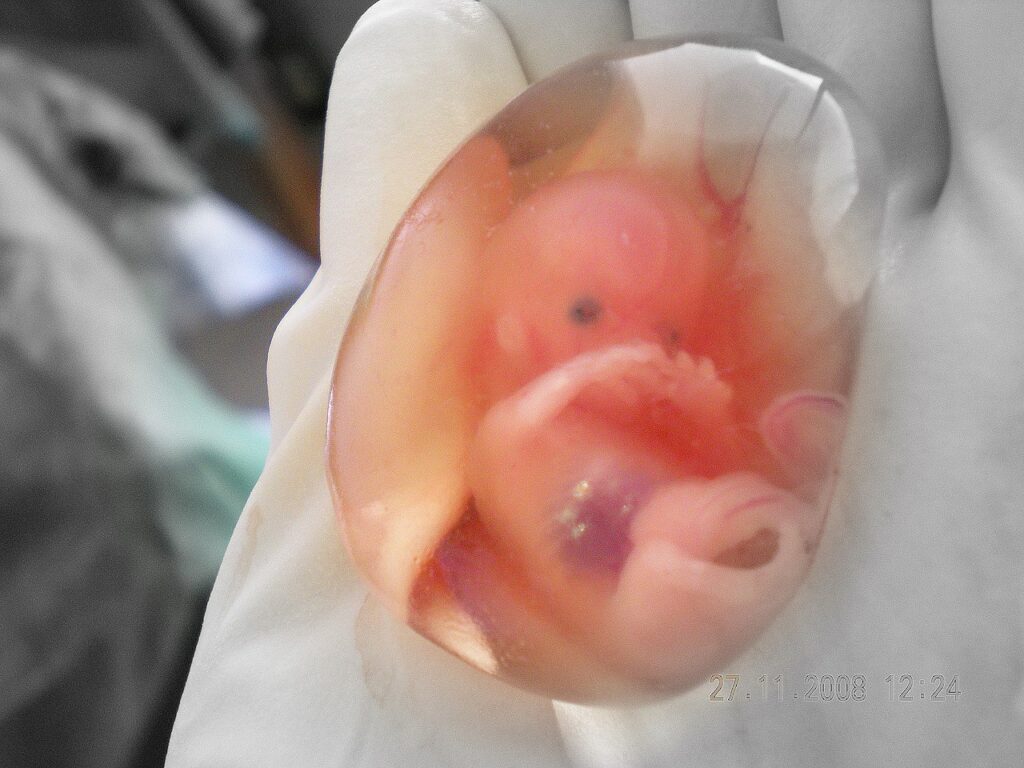Abortion
The number of abortions in the USA was declining. Here’s what reversed the trend
The latest abortion statistics from the Society of Family Planning, covered with barely contained glee by mainstream media outlets, indicate that the number of abortions increased during the first three months of 2024, with January being the first month since the Dobbs decision in which a staggering 100,000 abortions were performed. The numbers are undeniably grim.
To understand what these numbers mean, I spoke to pro-life statistician Dr. Michael New, a political scientist, visiting associate professor at the Catholic University of America, and an associate scholar with the Charlotte Lozier Institute. Dr. New is the rarest of academics—one who not only focuses in his research on the impact of pro-life laws, but one who actually sidewalk counsels outside abortion clinics regularly in Washington, D.C.
“I have always encouraged pro-lifers to view the Society of Family Planning’s abortion estimates with some skepticism,” New observed. “They have no experience estimating U.S. abortion numbers prior to 2022. Furthermore, some of their data comes from companies that send chemical abortion pills through the mail. These organizations have incentives to inflate their numbers. That said, these new figures should concern pro-lifers.”
Dr. New was kind enough to answer my questions.
What, based on the available data, is causing this rise in abortions?
Based on the available data, increased availability of chemical abortion drugs is causing the rise in abortions. In 2016, the FDA made several policy changes that made chemical abortions easier to access. They extended the gestational age limit for chemical abortions from 7 weeks to 10 weeks. They also approved a dosing regimen. Women obtaining chemical abortions only had to make 1 visit to a health care professional instead of 3 visits. In 2016, the FDA also allowed nurse practitioners and other medical professionals to prescribe mifeprex, one of the drugs used in chemical abortions. Then in 2021, the Biden Administration FDA announced it would no longer enforce the 1 visit requirement.
According to CDC data, between 2016 and 2021 the fraction of all abortions that were chemical abortions increased from 30.3 percent to 56 percent. It should not come as a surprise that after a fairly consistent 36 year decline, the U.S. abortion rate increased in 2017 and has increased since that time.
To what extent is the bad economy and inflation impacting the abortion rate, considering that many choosing abortion cite financial difficulties?
I do not think the bad economy and relatively high inflation rate are playing a role in the abortion rate increase. The abortion rate started to increase in 2017 before the economic slowdown began and before the inflation rate increased. I should also add that the U.S. abortion rate continued to fall during the early 1990s recession and during the great recession between 2007 and 2009. Overall. I do not think the strength of the economy plays a large role in the incidence of abortion in the United States.
To what extent does “tele-health” and “mail order abortions” create an unprecedented challenge for the pro-life movement?
Tele-health and mail order abortions create an unprecedented challenge because they can undermine the strong pro-life laws that many states passed in the aftermath of the Supreme Court’s Dobbs decision. Fourteen U.S. states have laws in place that largely protect all preborn children. Seven additional states have laws in place that protect the preborn after a certain gestational age. Birth data shows that these laws have succeeded in saving thousands of lives. However, these laws are less effective if abortion vulnerable women can obtain chemical abortion drugs through the mail.
Does the abortion pill present a new era in the abortion wars?
Yes, the abortion pill presents a new era in the abortion wars. Pro-lifers need to prioritize preventing chemical abortions. There are several different strategies that can be utilized. First, is to use litigation against the FDA. A strong argument can be made that the FDA did not follow their own rules regarding testing and safety when they eased access to chemical abortion drugs in 2016 and 2021. Pro-lifers did not get the outcome we wanted in FDA vs. Alliance v. Hippocratic Medicine this summer. However, that is because the Supreme Court ruled that the plaintiffs lacked standing. A different case with a different plaintiff might result in a different outcome.
Another strategy is to use litigation to invalidate shield laws. Right now, six politically liberal states have shield laws in place. These laws legally protect abortion doctors who prescribe chemical abortion drugs via telehealth to women living in states with pro-life protections in place. State attorneys general in conservative states are reportedly considering various litigation strategies.
A final strategy would be to elect a pro-life president who would simply appoint FDA personnel who would place limits on the shipment and use of chemical-abortion drugs.
In your view, will the abortion rate continue to rise?
Predicting future abortion rate trends is difficult. Young people who came of age in the early 2000s were more pro-life than previous generations of young people. However, the current generation of young adults seems much more sympathetic to legal abortion. It is possible that this shift in attitudes might also be playing a role in the recent increase in the U.S. abortion rate.
I should add with the recent increase in chemical abortions, FDA appointments could have a large impact on the incidence of abortion. If Donald Trump is elected president, he could appoint FDA personnel who would place limits on the shipment and use of chemical-abortion drugs. That could potentially result in significant reductions in the U.S. abortion rate. Donald Trump has certainly not made any promises to place limits on chemical abortions. However, his FDA appointees would certainly be more sympathetic to the concerns of pro-lifers than any appointees made by Kamala Harris.








